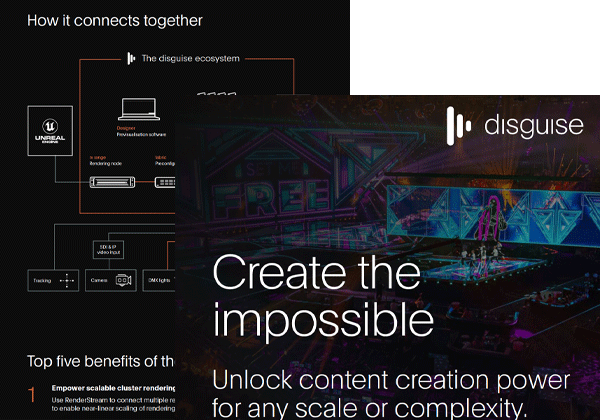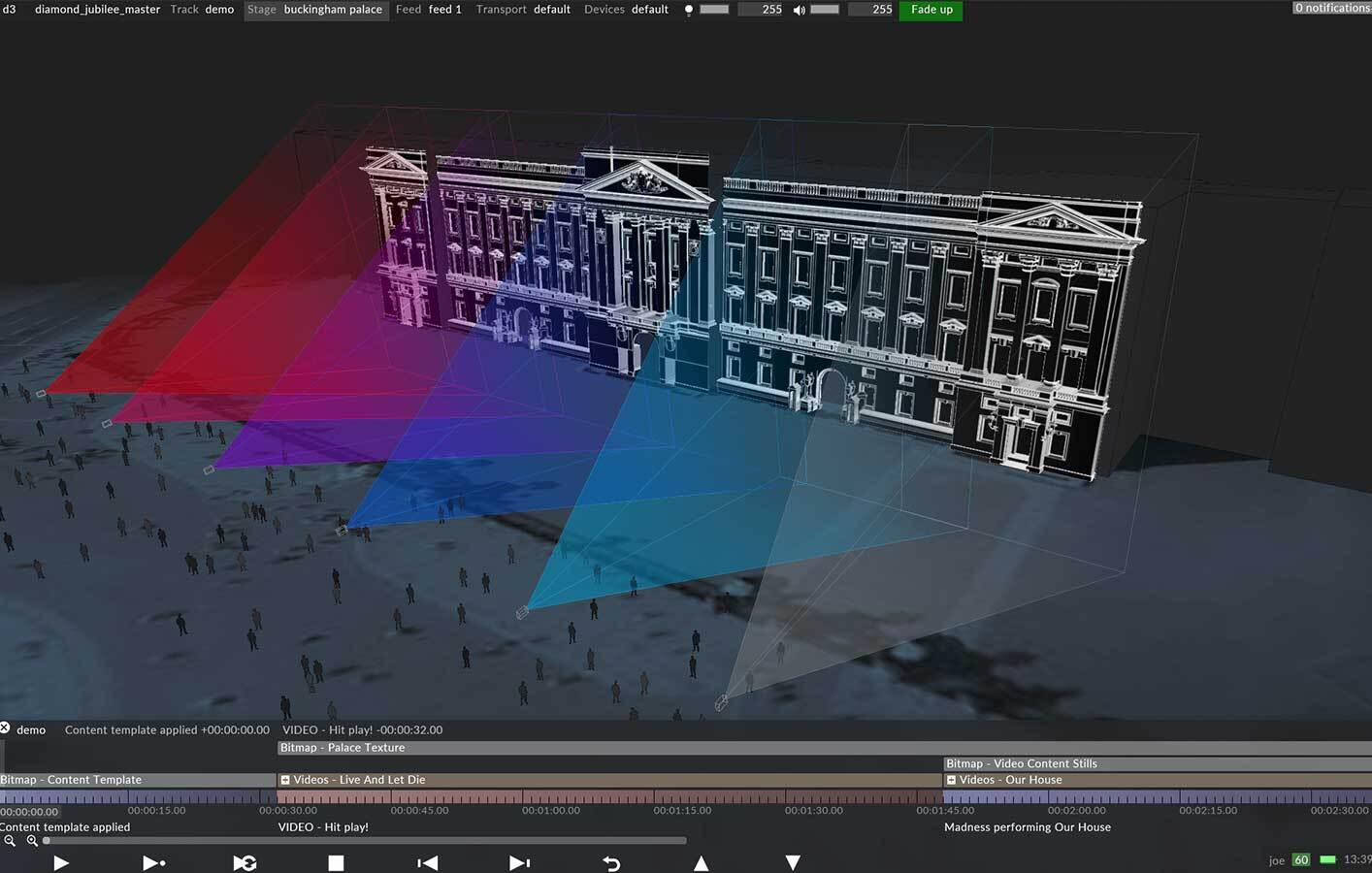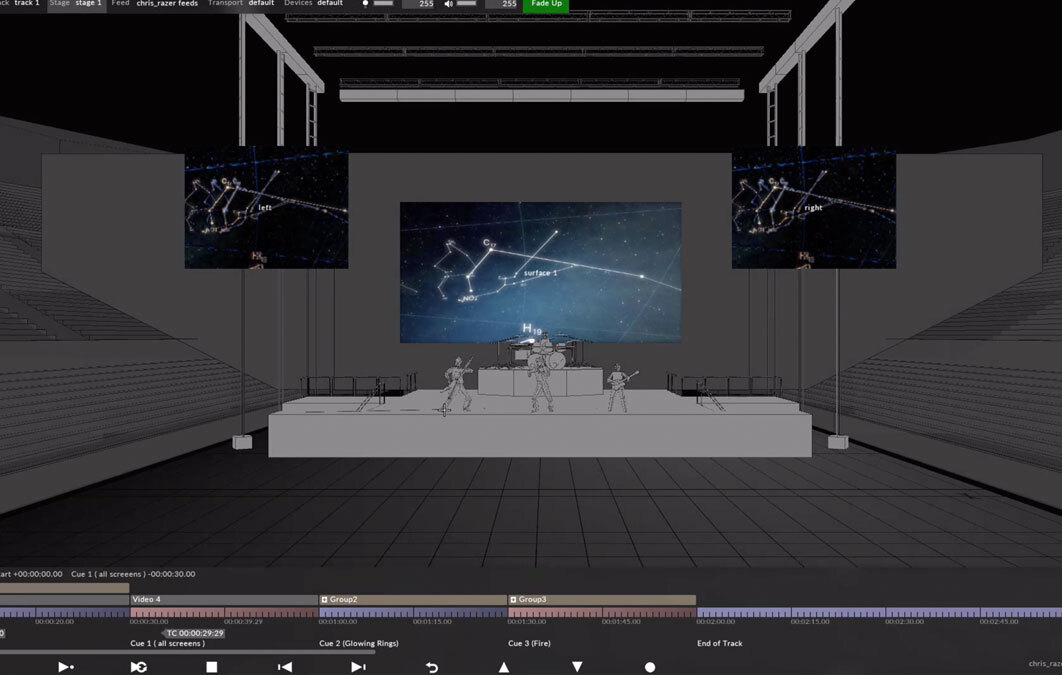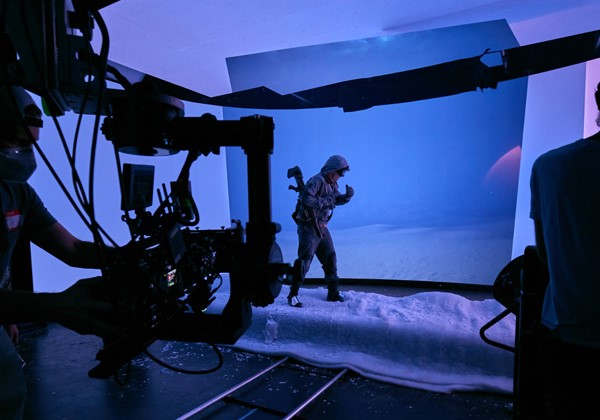
blog 2020 6 min read
Pre-visualisation with disguise: From concept to reality

disguise is a proven, powerful tool that creatives can use to different ends. Though these experiential projects can vary wildly, one thread of commonality runs through them; the ability to use disguise to see the results of the production early on. Here’s how this pre-visualisation can be invaluable.
Pre-visualisation, or pre-vis, is the foundation on which a successful live event, fixed installation or extended reality project rests. One of the lesser talked about advantages of using disguise in any market is the power it holds as a pre-visualisation tool.
As productions of all types – broadcast, film production, fixed installations, theatre, live events, concert touring – have become more complex, pre-visualisation has become an increasingly important part of the pre-production process. Productions today may include automated scenery, LED panels, projection mapping, and elements of virtual reality, augmented reality and mixed reality. The combination of these technologies sometimes means creatives can struggle to envision the final result.
Using the powerful content playback capabilities of our media servers, disguise users across a wide range of markets have been using the platform as an essential pre-vis tool for many years now making disguise media servers their solution of choice from concept to delivery.
Pre-visualisation as a tool for collaboration
The success of a production is directly linked to the ability of the creatives behind the project to collaborate early on in the design process. When directors, set designers, lighting and projection engineers, video artists, sound specialists and choreographers collaborate at an early stage, pre-vis allows their conversations to lead to new ideas and problem-solving earlier in the production process, saving the production time and money.
Watch our webinar on pre-visualisation and disguise in theatre
Pre-visualisation promotes design iteration, in which the design of the production evolves over time. Moving the design forward in pre-vis means time in the actual venue is spent on finessing, not fixing big mistakes because they have already been identified and corrected. Pre-vis gives creatives the vision to see exactly what their production will look like well in advance while easing the need for on-site logistics. They can analyse the path of any automated scenery, see screen placement and any obstruction by speakers and lights, warp and map projected content, and review lighting plots – all before anything is loaded and rigged at the venue, stage or set.

Until recently getting creatives to engage with the pre-vis process and 3D visualisation has been a fairly technical procedure. The more creative teams are involved in pre-vis, the more cohesive the design process, so full participation is key. Today, creatives use various 3D platforms to design individual content elements so the ability to import their 3D models into disguise and render them out for all to see makes for a smooth pre-vis workflow that is so visual and accessible, people often cannot help but engage with it. What’s more, our tech serves as an all-in-one solution that offers powerful content playback when it comes to delivering the production. There’s no need to change platforms from the pre-pro stage into full production – the quality of the pre-rendered content is high enough for the final show.
Pre-visualisation as a tool for immersive environments
Over the course of the coronavirus pandemic, we’ve witnessed an acceleration in the creation of immersive environments through virtual production as live events have been put on pause. More than ever, art and entertainment content needs to be communicated in such a way that immediately connects with the audience. As a result, many creatives have embraced virtual, augmented and mixed reality to deliver their narratives when in-person events are not possible.
disguise was used as a pre-vis tool for Fox’s Super Bowl LIV studio
In these immersive environments, physical scenery and live actors might be overlaid with digital content so audiences, or pre-vis collaborators, can walk through a space interacting with the real and the digital simultaneously. This is common in game engines, which let users manipulate real-time content to create personalised experiences. A particularly innovative application example would be inserting a live performer into VR, someone who engages with the audience inside an immersive environment that the audience walks around in and interacts with.

These complex experiences require extensive pre-vis to envision worlds never seen before, where every component triggers a reaction on another element. Live-rendered productions use VR headsets running game engines for pre-vis. A creative can put on a headset and navigate the set, scenery, actors, VFX and SFX, experiencing the rendered content to see how everything works in the environment and determine if things like the size, scale, lighting, positioning of certain physical and virtual items are correct. When everything looks good the show is run live using traditional equipment such as lighting consoles, automation systems, motion capture gear and media servers.
Facilitating pre-vis with disguise
With pre-vis assuming a more significant role than ever, tools that facilitate the process for the entire design and production team have never been in higher demand. We’ve recognised this and have in turn increased our support for pre-visualisation across the disguise product range.
Our Designer software enables users to visualise, design and sequence projects from concept to completion. In the concept development stage, Designer provides real-time 3D simulation, projection simulation and content mapping capabilities. Content can then be validated, the show sequenced in the disguise timeline and a copy of the project loaded onto our media servers for playback.
Get your complimentary Designer license - Limited time only
The gx product range features real-time rendering, a key attribute that many productions require for complex pre-vis, and for pushing generative content to new heights.
Additionally, the 3D pre-vis suite of tools of the vx 4 takes the process to another level. The vx 4 media server can frame and test visual content in the VR environment allowing creatives and their clients to experience content in a VR space simulating the final production. They can evaluate the experience in advance, make adjustments to the size and scale of visuals, and use the vx 4 to ultimately drive final VR content, including integrated screen control.
The need for effective pre-vis solutions will only grow as creatives explore emerging technologies to find exciting new ways to deliver narratives across markets. disguise offers a pathway to promote easy collaborative pre-vis now and as productions gain even more complexity in the future.
Discover the technology that makes pre-vis with disguise possible

